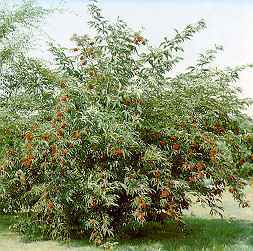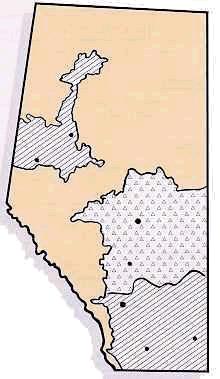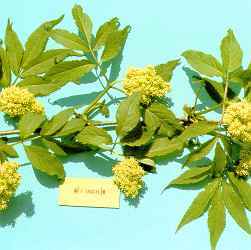| | Plant characteristics | Site preference | Hardiness | Uses | Problems | Diseases | Insects | Pruning
.

Scientific Name: Sambucus racemosa L.
Plant Characteristics
Red elder is a tall-growing, deciduous shrub growing to a mature height of 3 to 4 m (10 to 13 ft), a spread of 2.5 m (8 ft), and an annual growth of 15 to 30 cm (6 to 12 in.). The six - year - old and older wood should be removed to promote vigorous growth of the shrub.
Bark - Thin, light reddish-brown, with narrow, intersecting scaly ridges. Wood has corky brown pith.
Flowers - Flowers small, in cream-coloured clusters 5 to 8 cm (2 to 3 in.) across, appearing in late May or early June.
Fruit - Small, but the bright red clusters are quite showy. They appear in July or August, and turn black with frost.
Leaves - Leaves are opposite, 4 to 8 cm (1.5 to 3 in.) long, compound pinnate, with 3 to 7 ovate to elliptic leaflets. Sharply and coarsely serrate. Leaflets nearly sessile. Propagated by seed.
Site Preference
Red elder will grow under a wide variety of soil conditions, it can survive drought conditions and it can withstand some shade.
Hardiness
Sensitive - it might experience some winter damage.
.


Uses
Screen planting, shelterbelt, and sometimes used as a small single - or multi-stemmed tree.
Red elder can be planted 1 to 3 m (3 to 10 ft) between plants in the row, and 5 to 8 m (17 to 26 ft) between rows.
Problems
Winter dieback above snowline.
Diseases
Crown rot.
Insects
Aphids.
Pruning
Removal of older and winter injured wood.
.

Shelterbelts Varieties for Alberta provides information on a number of other trees and shrubs than may be suitable for shelterbelts.
Visit our website directory for the Reforestation Woodlot Listings.
|
|